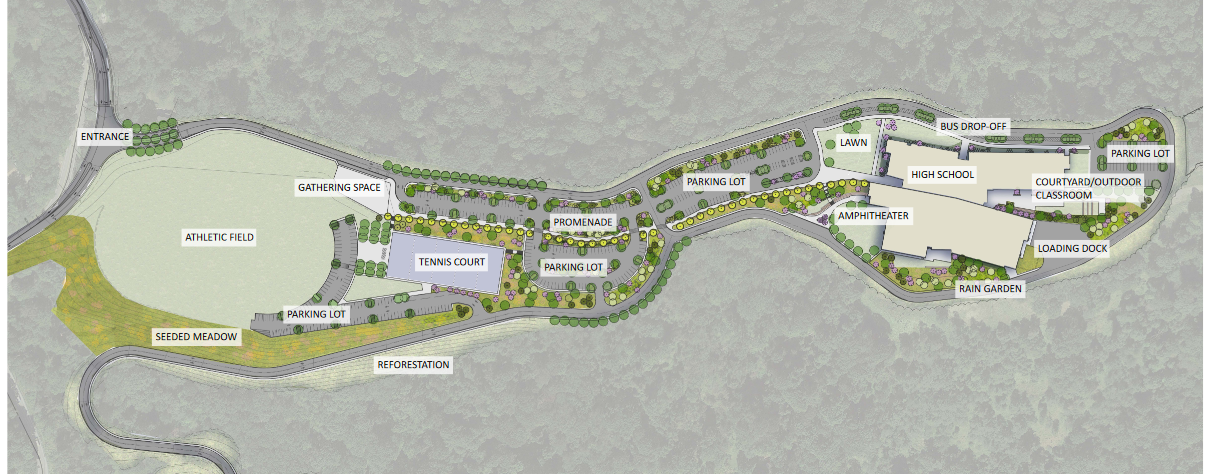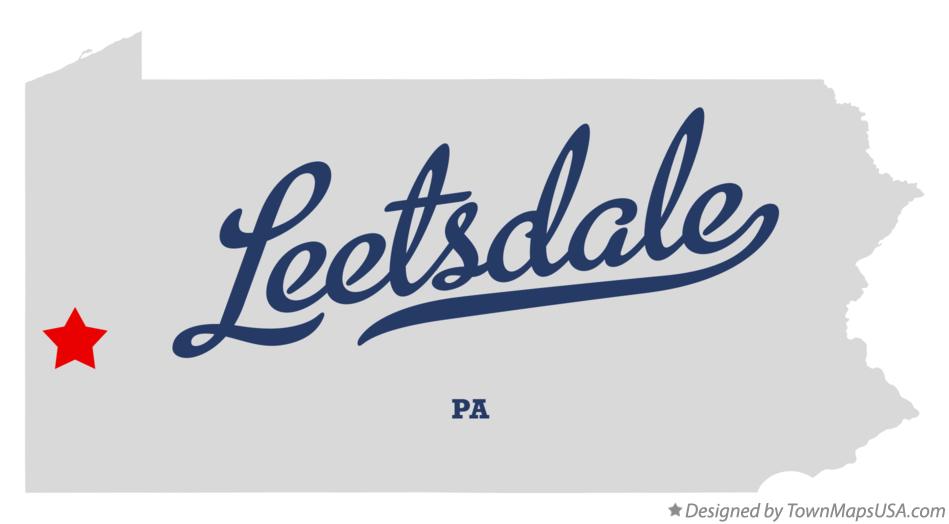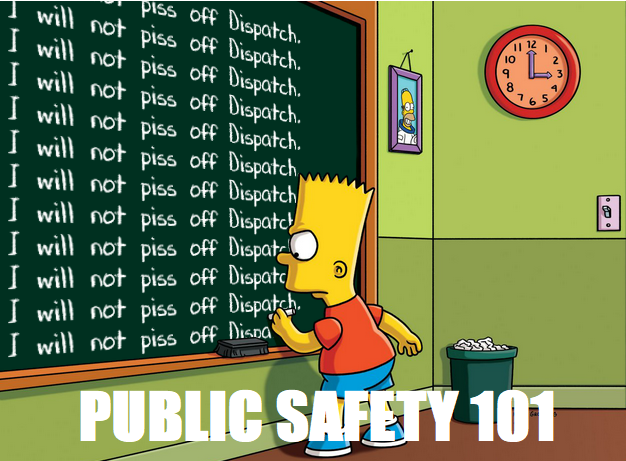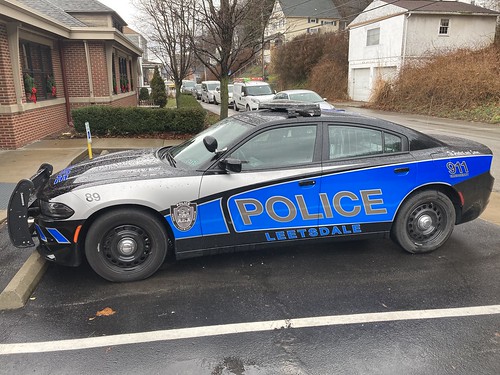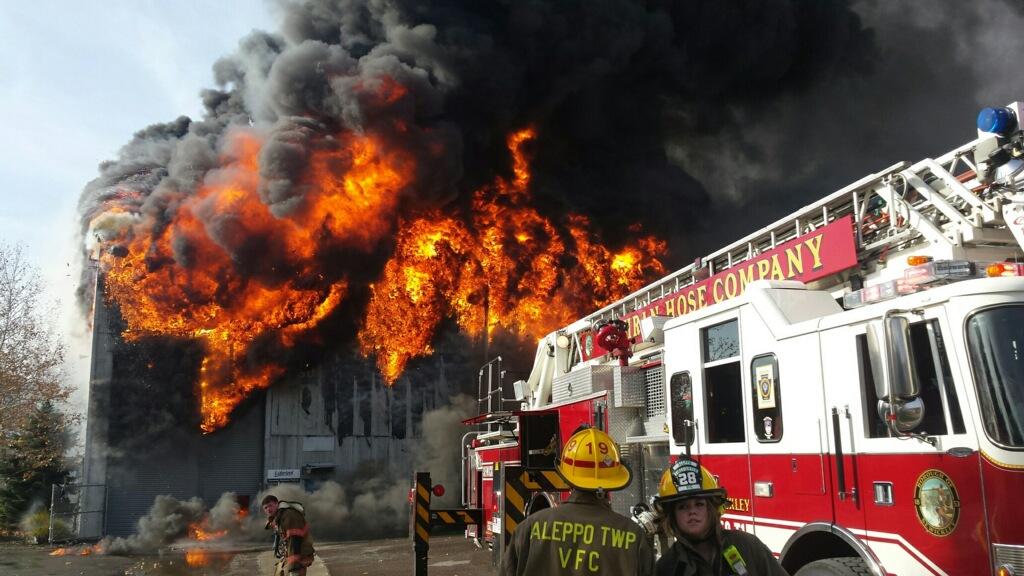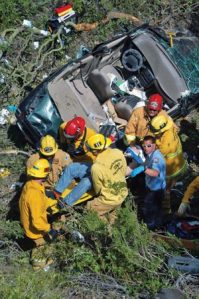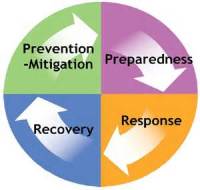Every couple of years stories appear in the media concerning the challenges faced by Emergency Medical Services providers, who are largely dependent on health insurance billing for the bulk of their operating revenue. This year has seen increased media coverage of these challenges, as well as reporting on some unique solutions.
EMS is not alone in facing significant challenges – the other public safety disciplines are also facing crises with their own set of issues and factors, along with some common ones.
Before we get into this – public safety has been my livelihood for nearly 40 years, so the disclaimer on the masthead of this blog remains in force –
The opinions expressed in this weblog are solely my own as an individual and private citizen, and do not represent the opinion or policy of my family, my employer, or any other private or public entity.
This includes the Quaker Valley Ambulance Authority, on whose board I currently serve as the representative for Leetsdale Borough.
At the beginning of this month, Trib Total Media reporter Rebecca Johnson reported on the continued funding crisis plaguing Pennsylvania EMS agencies. She interviewed EMS chiefs from across Allegheny County, including from our local EMS provider.
 The well-written story highlighted common challenges across the agencies – staffing and retention, health insurance reimbursement, and support from municipalities served. It should be noted that the Quaker Valley Ambulance Authority, operated by Valley Ambulance Authority under an agreement dating to QVAA’s inception nearly 50 years ago, receives operational funding from an annual per capita tax assessment from the 11 member municipalities. That assessment is currently $9 per person, and with current population figures generates close to $140,000 per year.
The well-written story highlighted common challenges across the agencies – staffing and retention, health insurance reimbursement, and support from municipalities served. It should be noted that the Quaker Valley Ambulance Authority, operated by Valley Ambulance Authority under an agreement dating to QVAA’s inception nearly 50 years ago, receives operational funding from an annual per capita tax assessment from the 11 member municipalities. That assessment is currently $9 per person, and with current population figures generates close to $140,000 per year.
I believe that the best EMS agencies (Valley / Quaker Valley included) draw their operating philosophies from both the health care and public safety disciplines, and through a commitment to excellence in both have established themselves as equal and essential members of the public safety community.
It therefore follows that as a public safety agency, EMS needs to be supported by revenue streams from both health care and local government.
As the Trib story indicated, municipal support for EMS varies greatly across agencies and local governments. The government of Penn Hills operates its own EMS agency, and funds it via their general fund budget. In 2023, their allocation for EMS is just under $2.3 Million. The 2023 budget for the City of Pittsburgh Bureau of EMS is about ten times that.
Health care-based revenue for EMS is largely tied to whether or not a patient is transported. The bulk of the EMS agencies in our area also provide non-emergency transport services (NET for short) such as from a hospital to a care facility, to generate the necessary health insurance billings to sustain the service.
The difficulties of sustaining operations based solely on the varying reimbursement rates of health insurers has taken its toll on EMS agencies in our region. Some municipal officials also bristle at increased response times to emergency calls by reduced numbers of available ambulances, often already committed to those transports necessary to provide the bulk of their revenue. In short, live by the NET, die by the NET…
There is hope on a couple of fronts. Many agencies are watching the assertive effort taken by the Ross / West View EMS Authority to provide a more reliable stream of operational funding.
 Ross/WV made headlines this past February by successfully completing an effort to have the five municipalities they serve enact an ordinance that levies a “Special Emergency Ambulance Service Fee” on all residences and businesses. The fee schedule is currently set at $55 per year for residences and small businesses, and scales upward to $500 per year for businesses with a permitted occupancy of 300 or more persons.
Ross/WV made headlines this past February by successfully completing an effort to have the five municipalities they serve enact an ordinance that levies a “Special Emergency Ambulance Service Fee” on all residences and businesses. The fee schedule is currently set at $55 per year for residences and small businesses, and scales upward to $500 per year for businesses with a permitted occupancy of 300 or more persons.
Ross/WV will be responsible for collecting the mandatory fee, and there is teeth in the ordinance to address scofflaws in the form of additional fees and/or the ability to seek relief via the local Magistrate. Through this process Ross/WV hopes to replace $300,000 in annual direct funding from their municipalities with as much as $1.8 Million if they collect what they believe they can.
Another effort underway on the legislative front is designed to recognize the changing operational landscape of EMS, and allow for government to apply a proven method for service delivery on a county-wide scale.
Senate Bill 501 would amend the state Municipal Authorities Act to allow for the creation of public safety authorities at the county level. Quoting co-sponsors Sen. Lisa Baker and Sen. Timothy Kearney –
Many EMS companies and communities know that regionalization provides an opportunity to provide better services in perpetuity, but struggle to find successful ways to get around the legal obstacles that our current structure inadvertently creates…
Our bill would give counties the option to create Public Safety Authorities, which may be used to provide services for EMS. Individual municipalities would be able to join, or not join if they so choose. Rather than replacing our incredible volunteer and career EMS companies, authorities would exist to support them and their work.
By giving counties and municipalities the tools to organize regionally, we allow for innovative service models—from centralized administrative support to higher levels of coordination—that can best fit the needs of our diverse communities.
Public safety officials in the northwest corner of the state are already making cooperative adjustments to response protocols in order to operate more efficiently. They are also entertaining the idea of a countywide authority to “among other things, provide a uniform system of funding for each EMS agency at a time when agencies are dealing with higher costs and call volumes, difficulties in attracting and retaining volunteers and paid staff, and challenges in raising enough money to support their operations“.
Regardless of the methods used, there is a need for EMS to secure a steady source of operating capital, independent of the outrageous fortune that accompanies reimbursement under our convoluted, dysfunctional health care system.
At the heart of this is the fact that EMS is public safety. How these agencies are funded, and the responsibilities these agencies have to both their respective profession and the communities they serve, is a struggle that has gone on for too long.
———————<–>———————-
Another existential crisis playing out in our public safety community concerns more of a crisis of attrition than of finances, but stands to exert significant impact on municipal and individual pocketbooks if not properly addressed.
A state senator and volunteer fire chief from the Philadelphia suburbs is sounding a familiar alarm, but with a more ominous tone and sense of urgency than in previous years-
“Ultimately, what’s going to happen is when we, the volunteers, go the way of the dinosaur, there’s going to be significant property tax increases…I’m not saying the volunteer fire service will completely go away. It’s (a question of): ‘Will the volunteer fire service be able to continue to provide adequate fire protection?’ If we don’t start getting some people in the door, that’s going to be reality.”
Over the last 12 years since I returned to the area, this drama has played out in several locations in and around the Quaker Valley, and continues as a daily challenge to departments with dwindling memberships, especially during workday hours.
This has not been lost on elected officials in several communities, who for this and other reasons made choices that ended their relationship with their legacy volunteer department. Since Edgeworth fired their volunteer department in 2011, the councils in Ben Avon and McKees Rocks have also de-recognized their departments, opting for coverage from an adjacent community.

Bellevue Borough Ladder Truck, 2016 – youtube.com
This past March, the council in Bellevue opted to end its relationship with the volunteer contingent that augmented the borough’s two paid firefighters. They also decided to bring in the Pittsburgh Bureau of Fire to assist with structural fire response, while maintaining the borough’s paid firefighters for other responses in conjunction with other North Boroughs companies.
The Bellevue council committee report and recommendation in support of this move details a relationship with their volunteers that is symbiotic and strained in their dealings with both council and the paid fire staff, and inevitably dysfunctional.
The report also points out a symptom of the dysfunction inherent in the volunteer fire service across the region –
It was noted in February of 2023…that the Borough’s firefighters had recently needed to call 8 different companies to get 14 firefighters on scene.
In 2020, during a structure fire on Grant Ave, 40–50 departments were called for mutual aid because so many companies sent a driver who was not qualified to fight fires, and the Assistant Chief had to keep calling other companies, possibly losing valuable time, and depriving other municipalities of staff and equipment. It is clear that relying on mutual aid companies brings more trucks to Bellevue but not the personnel necessary to fight fires.The State of Pennsylvania has relied too heavily on volunteer participation for decades, mostly to save on the costs associated with managing a fire service, and this model is currently in crisis in regards to funding and volunteer participation.
The Committee recognizes that while our volunteers are appreciated for their time and service, we are doing a disservice to our community by relying on skeleton crews to respond to calls. As noted in monthly reports, the department averages about one volunteer responder per call, often leaving our paid firefighters to arrive on scene alone or to enter a building alone.
There are some positives out there, however small and incremental. In Allegheny County there have been several consolidations of volunteer departments, most recently in Aspinwall and Sharpsburg.
Having spent a few years as a volunteer firefighter I can testify to how much an organization with that level of responsibility and community involvement thrives on a sense of belonging and purpose – even when the ability to serve that purpose is dwindling.

Leetsdale VFD – Sewickley Herald
This is not the case everywhere. We literally have a front row seat to the operations of our local fire company, along with being neighbors with the Chief and other officers and firefighters. There are several young people in the mix – a good sign for the future.
We see the effort and due diligence put in by this team every day, and how recognition of the limitations being felt by many of our area departments manifest themselves in who, at a minimum, is summoned to respond. The name on the side of the truck, along with the imaginary lines we draw around ourselves, become increasingly anachronistic in these times and under these circumstances.
How long it takes until recognition – or denial – of those limitations manifests itself in foundational change is largely dependent upon us citizens, and the elected leadership in which we place our trust – preferably without a tragedy to bring home the point.
———————<–>———————-
That elected leadership is also charged with budgeting and oversight of law enforcement services, which can take up a considerable chunk of a municipal budget, unless you are like Glenfield and Haysville and opt for services from the State Police.
 For those who prefer a locally controlled presence, the concept of regional policing is holding fast for those communities that embraced it years ago, and continues to attract the interest of those local governments that are seeing the advantages as staffing and budgets dwindle.
For those who prefer a locally controlled presence, the concept of regional policing is holding fast for those communities that embraced it years ago, and continues to attract the interest of those local governments that are seeing the advantages as staffing and budgets dwindle.
The concept of consolidation has begun to hit the news cycle with increasing frequency. A Post-Gazette overview from last week featured the fledgling Beaver Valley Regional Police Department, which consolidated from independent agencies in Baden, Conway, and Freedom, and is attracting interest from other nearby towns.
A supporting editorial spelled things out in the familiar, stark terms of media coverage past –
There are simply too many police and fire departments in the Pittsburgh region. The duplication — the result of an unplanned accumulation of neighborhood departments over the decades — makes public safety services unnecessarily expensive, with no real benefits in quality and efficiency.
Amen to that.
To conclude, I’d like to provide some statistics that seem to illustrate the local nature of this issue in pretty stark terms. Let’s look at three adjacent units of governance, similar in land area and population, in terms of public safety resources and coordination –
Avonworth School District
Municipalities – 5
Population – 12,398 Land Area – 10.5 square miles
Police Departments – 1
Fire Departments – 2
EMS Agencies – 2
Franklin Park Borough
Single municipality – Part of North Allegheny School District
Population – 15,239 Land Area – 13.5 square miles
Police Departments – 1
Fire Departments – 1
EMS Agencies – 1
Quaker Valley School District
Municipalities – 11
Population – 14,121 Land Area – 23.3 square miles
Police Departments – 8
Fire Departments – 7
EMS Agencies – 1
From this standpoint it looks like our local municipal and public safety leaders have some talking – and work – to do.
Until next time.



